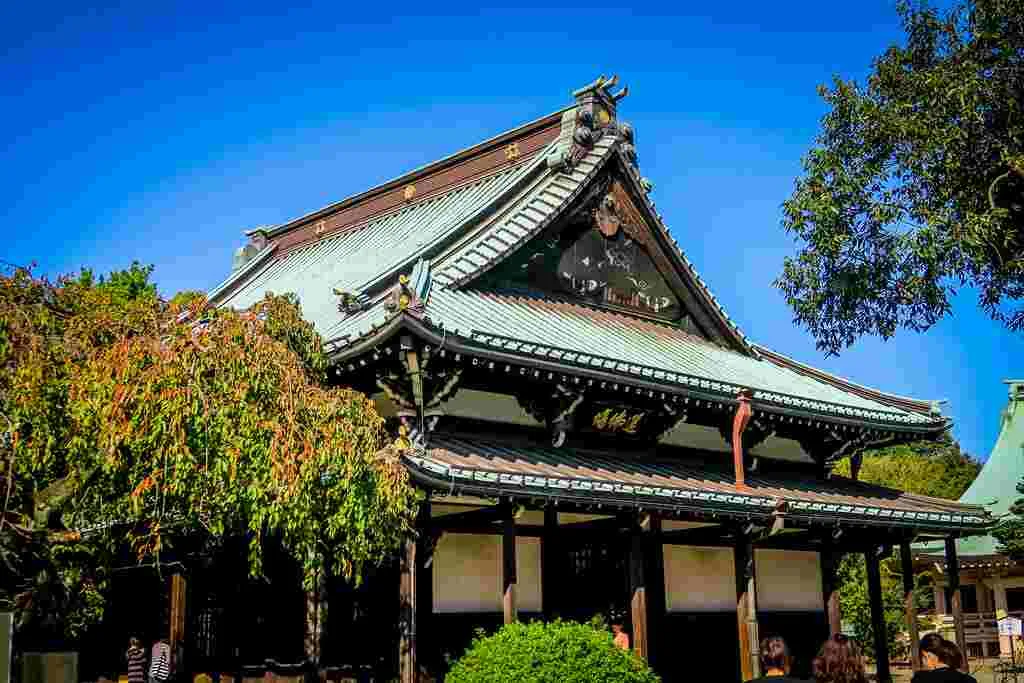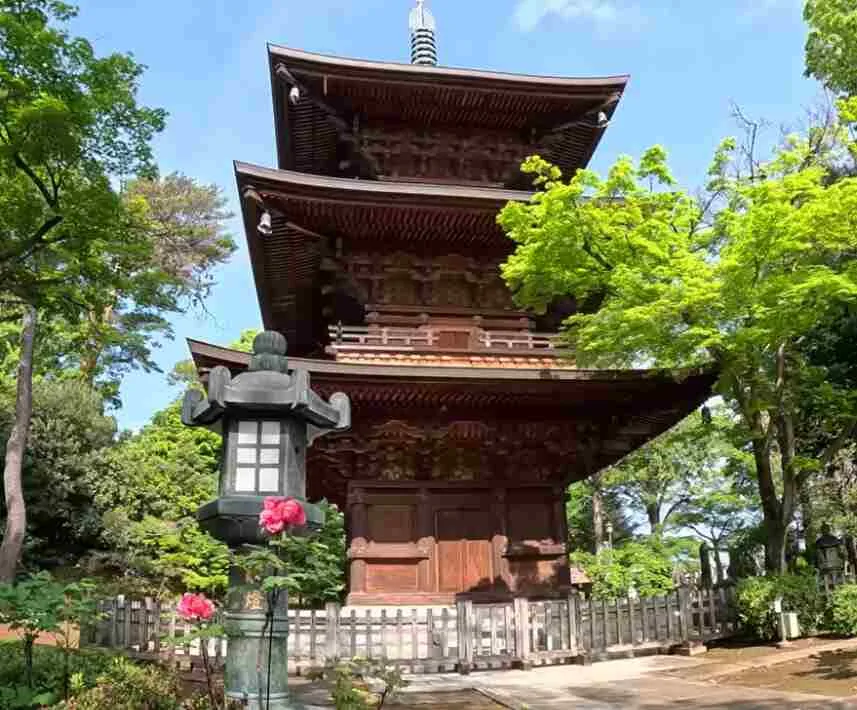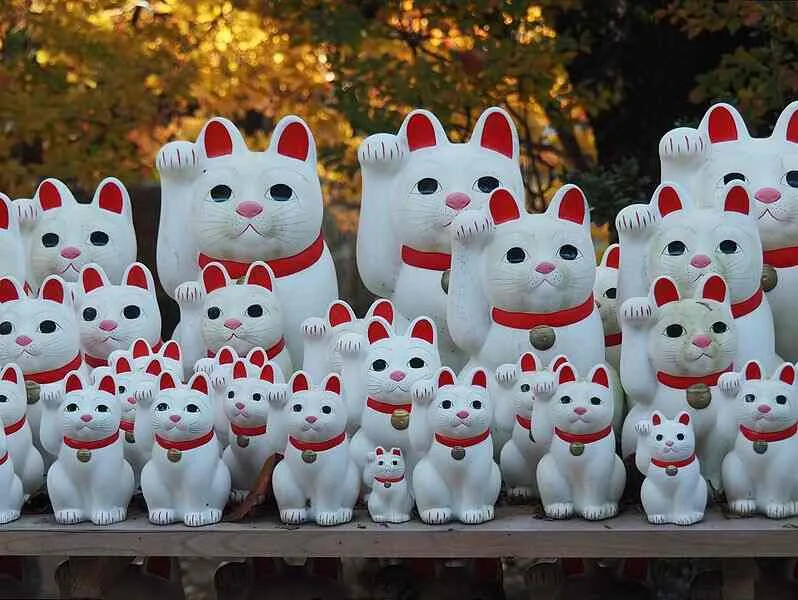Nestled in the serene Setagaya ward of Tokyo, Gotokuji Temple is a hidden gem that beckons visitors with its unique charm and historical significance. Known as the birthplace of the iconic maneki-neko, or “lucky cat,” this Buddhist temple offers a tranquil escape from the bustling city life.
In this article, we will delve into the rich history, fascinating legends, architectural marvels, and nearby attractions of Gotokuji cat Temple, making it a must-visit destination for both history enthusiasts and cat lovers alike.

History of Gotokuji Temple
Gotokuji Temple, located in the Setagaya ward of Tokyo, is renowned for its association with the maneki-neko (beckoning cat) figurines. The temple’s history is deeply intertwined with Japan’s feudal era and the influential Ii clan.
Early Beginnings
The origins of Gotokuji Temple can be traced back to the late 15th century when it was initially established as Kotoku-in in 1480. The temple was relatively obscure until the early 17th century when the Setagaya area came under the control of the Hikone Domain, ruled by the Ii clan.
The Legend of the Beckoning Cat
The most famous legend associated with Gotokuji Temple involves Ii Naotaka, the second lord of the Hikone Domain. According to popular lore, during the 17th century, the temple was struggling financially and barely managed to keep its doors open. The residing priest had a cat named Tama, whom he shared his meager meals with.
Around 1615, Ii Naotaka was passing by the temple when a sudden thunderstorm struck and took shelter under a tree near the temple grounds. He noticed a cat, which seemed to be beckoning him to come inside the temple gates.
Intrigued by the cat’s gestures, Ii Naotaka followed it inside the temple, thereby escaping a lightning strike that hit the tree he had been standing under. In gratitude, Ii Naotaka became a patron of the temple, which led to its prosperity and eventual renaming.
Transformation and Renaming
In 1633, the temple was officially designated as the Bodaiji (family temple) of the Ii clan. It was during this period that the temple underwent significant renovations and expansions. In 1659, following the death of Ii Naotaka, the temple was renamed Gotokuji in honor of his posthumous Buddhist name, Kyushoin-den-Gotoku-Tenei-Daikoji.
Edo Period Developments
Throughout the Edo period, Gotokuji Temple continued to flourish under the patronage of the Ii clan. The temple grounds were expanded to include a cemetery for the clan, which remains a significant historical site today.
The cemetery houses the graves of successive feudal lords and their first wives, including the 13th lord, Ii Naosuke, who played a pivotal role in the late Edo period.

Architectural and Cultural Significance
Gotokuji Temple is a prime example of Edo-period architecture and design. The temple complex includes several important structures such as the Butsu-den (Buddha Hall), built in 1677, which houses statues of Amida Nyorai, Shaka Nyorai, and Miroku Bosatsu. These statues represent the past, present, and future Buddhas, respectively.
The temple also features the Kaiso-do, inaugurated in 1999, which enshrines statues of the temple’s founders and significant figures in the Soto Zen school of Buddhism.
Modern-Day Gotokuji
Today, Gotokuji cat Temple is best known for its thousands of maneki-neko figurines, which are believed to bring good luck and fortune. Visitors from around the world come to see the sea of white cats with raised paws, each one a token of gratitude from worshippers.
The temple remains a serene and picturesque spot, offering a peaceful retreat from the hustle and bustle of Tokyo. It continues to be a place of worship and a cultural landmark, preserving the rich history and traditions of the Edo period.

Architectural Marvels of Gotokuji Temple
Gotokuji Temple, located in the Setagaya ward of Tokyo, is a stunning example of traditional Japanese architecture. The temple complex is a harmonious blend of historical structures, serene gardens, and cultural artifacts, making it a captivating destination for visitors.
Main Hall (Hondo)
The Main Hall, or Hondo, is the centerpiece of Gotokuji Temple. This hall is a classic example of Edo-period architecture, characterized by its wooden construction and intricate carvings. Inside the Hondo, visitors can find statues of Amida Buddha, Shaka Nyorai, and Miroku Bosatsu, representing the past, present, and future Buddhas. The hall serves as the primary place of worship and meditation, offering a tranquil space for reflection.
Pagoda
One of Gotokuji’s most iconic features is its three-story wooden pagoda, which survived World War II air raids intact. This pagoda is a classic representation of Japanese temple architecture, characterized by its tiered roofs that gracefully ascend into the sky. It serves not only as a visual focal point but also as a symbol of resilience and spiritual elevation.
Maneki-neko Figurines
The temple grounds are famously adorned with thousands of maneki-neko (beckoning cat) figurines. These figurines are placed throughout the temple, creating a whimsical and enchanting atmosphere. Each maneki-neko is a token of gratitude from worshippers, symbolizing good luck and prosperity. This unique feature sets Gotokuji cat Temple apart from other temples in Japan.
Gardens and Pathways
Gotokuji Temple is surrounded by lush gardens and stone pathways that enhance its serene ambiance. The gardens are meticulously maintained, featuring a variety of seasonal flowers and trees, including cherry blossoms, plum trees, and maple trees. These gardens provide a peaceful retreat for visitors, offering a perfect setting for a leisurely stroll or quiet contemplation.
Cemetery and Tombs
The temple grounds also include a cemetery that houses the tombs of the Ii clan, the feudal lords who were patrons of the temple. The cemetery is a significant historical site, reflecting the deep roots of Japanese Buddhist culture. Visitors can explore the tombs and pay their respects to the influential figures buried there.
Jizo Hall
Another notable structure within the temple complex is the Jizo Hall, dedicated to Jizo Bosatsu, the guardian of children and travelers. This hall is adorned with statues of Jizo, each one representing prayers and wishes from worshippers. The Jizo Hall is a place of solace and hope, attracting visitors who seek blessings for their loved ones.
Bell Tower and Stone Lanterns
The temple also features a historic bell tower and elegant stone lanterns. The bell tower houses a large bronze bell that dates back to the 17th century. The sound of the bell resonates through the temple grounds, adding to the serene atmosphere. The stone lanterns, scattered throughout the gardens, provide a touch of traditional Japanese aesthetics, especially when illuminated at night.
In Summary, Gotokuji Temple is a treasure trove of architectural marvels, each element contributing to its unique charm and historical significance. From the intricate carvings of the Main Hall to the serene beauty of its gardens, the temple offers a captivating experience for all who visit.
Whether you are drawn by the legend of the beckoning cat or the tranquil ambiance, Gotokuji Temple is a testament to the enduring beauty of traditional Japanese architecture.
Festivals and Rituals
The temple hosts several festivals throughout the year, with the Maneki-neko Festival being the most popular. During this festival, visitors can participate in various rituals and activities dedicated to the lucky cat figurines. The temple also offers omikuji (Japanese fortunes) and ema (wooden plaques) where visitors can write their wishes.
Temple also comes alive during the Obon Festival in August, a time when families come to honor the spirits of their ancestors. The temple grounds are illuminated, and traditional Bon Odori dances are performed, providing a culturally rich experience for visitors.
Accommodation and Travel Tips
For those planning to visit Gotokuji Temple, there are several accommodation options nearby, ranging from traditional ryokan (Japanese inns) to modern hotels in the Setagaya area or the trendy neighborhood of Shimokitazawa.
Reaching Gotokuji Temple is convenient, making it an accessible day trip for anyone in Tokyo. The temple is located in Setagaya Ward, approximately 20 minutes from Shinjuku Station.
Visitors can take the Odakyu Line to Gotokuji Station or the Tokyu Setagaya Line to Miyanosaka Station. From Gotokuji Station, it’s about a 10-minute walk through charming streets, while it’s only a 5-minute walk from Miyanosaka Station.
Gotokuji Temple opening time
Gotokuji Temple is open every day from **6 AM to 5 PM**. There is no entrance fee, allowing visitors to explore the temple freely during these hours.
What to Expect: Rituals and Etiquette
When visiting Gotokuji Temple, it is important to follow traditional Japanese temple etiquette. Visitors are encouraged to make a small donation at the offering box before offering prayers. The temple also allows for purchasing lucky charms and *omamori* (protective amulets) that can be taken home as souvenirs or gifts, believed to carry the temple’s blessings of luck and prosperity.
Many visitors choose to purchase a maneki-neko figurine to offer at the temple, either to make a wish or in gratitude for a fulfilled prayer. The sight of hundreds of these figurines left by previous visitors adds to the mystical ambiance of the place.
Best Time to Visit Gotokuji Temple
While Gotokuji Temple is open year-round, the best times to visit are during spring (late March to early April for cherry blossoms) and autumn (November for vibrant foliage). In spring, the temple grounds are graced with the stunning beauty of cherry blossoms, creating a breathtaking pink canopy over the area.
Autumn brings a palette of fiery red and orange hues as the maple trees surrounding the temple change colors. These seasons offer an enchanting backdrop for visitors looking to take in the peaceful beauty of the temple while also experiencing traditional Japanese seasonal scenery.

Nearby Attractions
While visiting Gotokuji Temple, there are several nearby attractions worth exploring:
1. Setagaya Hachimangu Shrine: A short walk from Gotokuji, this shrine is dedicated to Hachiman, the god of war and protector of Japan. It offers a peaceful atmosphere and beautiful surroundings.
2. Setagaya Park: A perfect spot for a leisurely stroll or picnic with lush greenery and playgrounds.
3. Shimokitazawa: Known for its vibrant arts scene, trendy boutiques, and cozy cafes, Shimokitazawa is a great place to experience Tokyo’s bohemian culture.
♣♣You May Also Like: ⇓
- Erdene Zuu Monastery, Mongolia: A Vibrant Heritage
- Unique Wat Sorasak: A Jewel of Sukhothai’s Past
- The Kukurdev Temple of Chhattisgarh: A Sanctuary of Faith and Loyalty
- Outstanding Yasaka Pagoda: A Timeless Landmark in Kyoto
- Remarkable Blue Temple of the Chiang Rai, Thailand
Conclusion
Gotokuji Temple is not just a temple- it’s a serene retreat where history, spirituality, and cultural heritage converge. The overwhelming presence of maneki-neko figures, the beautiful temple grounds, and the rich history tied to Japan’s samurai past make it a destination that appeals to both the spiritually inclined and those with a deep interest in Japanese culture.
Whether you’re looking to make a wish, explore historical architecture, or simply enjoy a peaceful day away from the city’s hustle, Gotokuji Cat Temple offers an unforgettable experience.
FAQs:
1. What is Gotokuji Temple known for?
Gotokuji Temple is famous as the birthplace of the maneki-neko (beckoning cat) and is adorned with thousands of these lucky cat figurines.
2. is there an entrance fee to visit Gotokuji Temple?
No, admission to Gotokuji Temple is free.
3. How do I get to Gotokuji Temple?
You can take the Odakyu Line from Shinjuku Station to Gotokuji Station or the Tokyu Setagaya Line from Shibuya Station to Miyanosaka Station. Both stations are within walking distance of the temple.
4. When is the best time to visit Gotokuji Temple?
The best times to visit are during spring for cherry blossoms and autumn for vibrant foliage.
5. Can I purchase maneki-neko figurines at the temple?
Yes, there is a shop at the temple where you can buy various sizes of maneki-neko figurines and other lucky charms.
6. Are there any restrictions on photography at Gotokuji Temple?
Photography is generally allowed; however, it’s respectful to avoid taking photos during prayer times or in certain sacred areas.
7. Is there parking available at Gotokuji Temple?
Parking is limited; public transport is recommended for visiting the temple.
4 thoughts on “Gotokuji Temple, Tokyo, Japan: Beautiful Home of Lucky Cat”